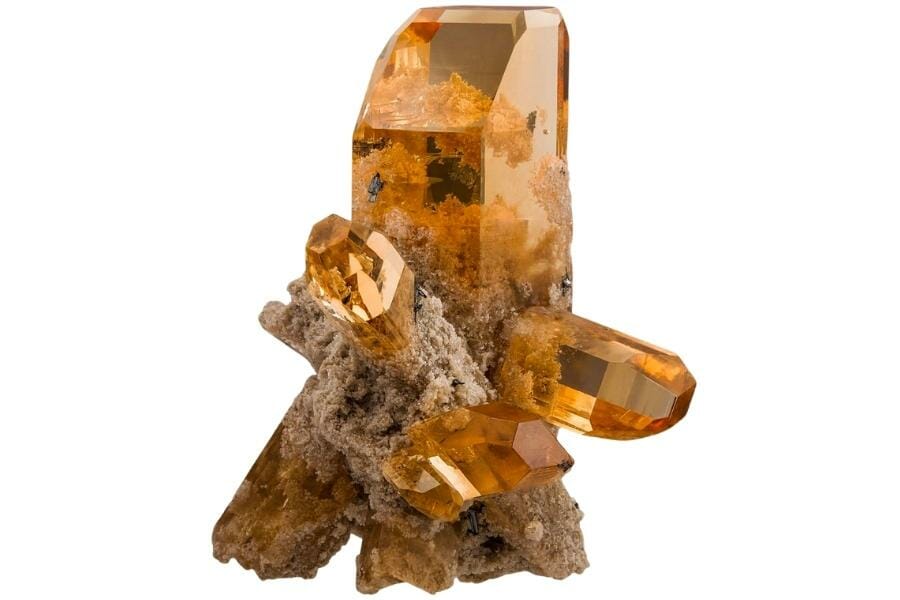Topaz is one of the most exciting gems you can come across while exploring the great outdoors. But do you know how to find topaz in its natural environment?
At first glance, they might not always look as shiny and polished as the gems in a jewelry store.
While they can be a bit tricky to spot, once you know what you’re looking for, it’s like a thrilling game of hide-and-seek. If you’re wondering where to start your topaz hunting, you’re in luck!
In this article, we’re going to take you on an adventure to discover the best places to find topaz. We’ll also equip you with some fantastic tips on how to identify topaz in the field. With our help, you’ll become a topaz-spotting expert in no time!
What Is Topaz?
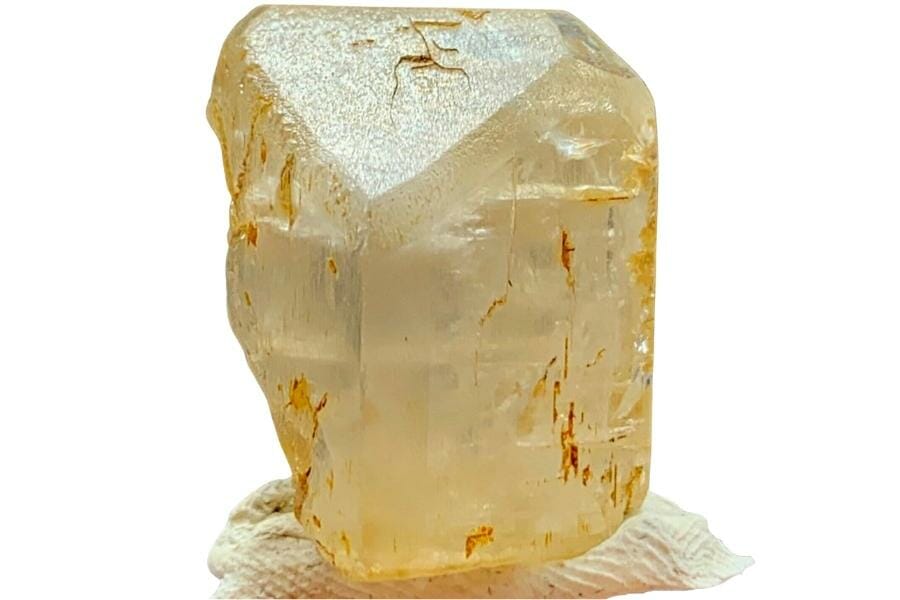
Every topaz starts its journey deep within the Earth under high pressure and temperature.
Over time, hot liquids filled with minerals move through cracks in the rocks. As these liquids cool down, topaz crystals begin to form.
This gem can be found in many colors, from clear and golden to blue and even pink. Its color depends on tiny bits of other minerals that get mixed in.
But where exactly can you find topaz? Well, it’s hiding in various parts of the world! Places like Brazil, Russia, and the American West are known for their topaz. Often, it’s found near streams and in rocky areas.
The different types of topaz
A huge part of successfully finding a topaz is to get familiar with the different types that you might encounter during your search. Below are the variations of topaz, including photos of what they look like.
Imperial topaz
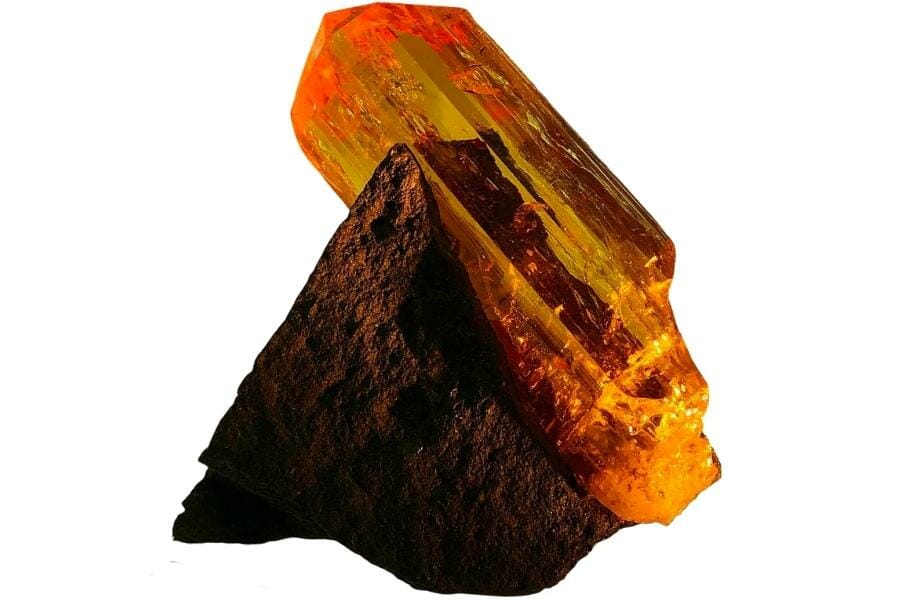
Imperial topaz is mostly golden-yellow to orange, but the real showstopper is when it has hints of pink, making it look like a sunset captured inside a gem.
The name “imperial” isn’t just for show, too. This type of topaz got its name because, in the 19th century, the Russian royal family loved it so much that they claimed the pink topaz found in Russia exclusively for themselves.
That’s right, back then, only royals could own the pinkish gems from those mines!
Today, the most famous place for finding top-quality imperial topaz is Brazil. In fact, the Ouro Preto region in Brazil is known as the classic source of this stunning gem.
So, when you see an imperial topaz, you’re not just looking at a gem; you’re glimpsing a piece of royal history.
Rose topaz
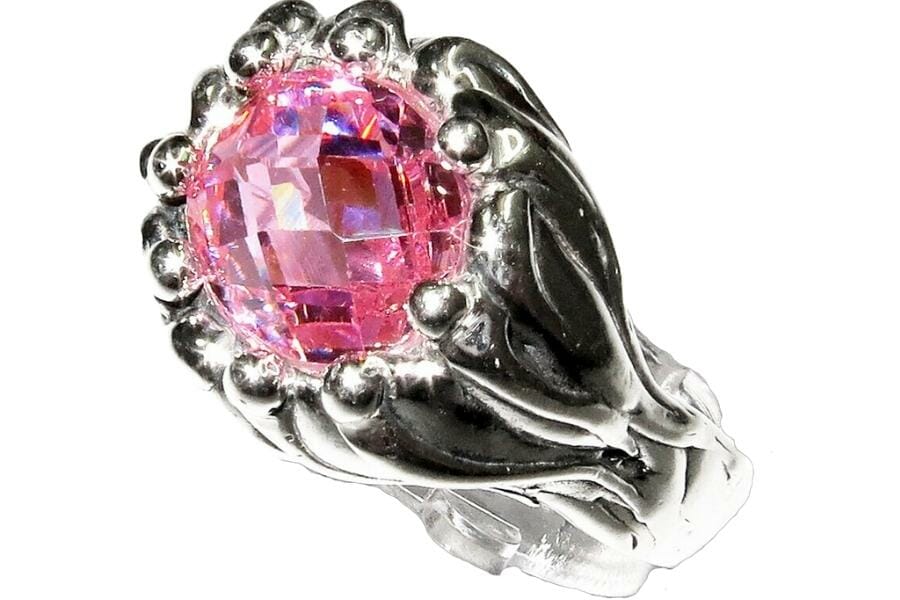
Rose topaz has a delicate pink hue, setting it apart from other types of topaz. Its color is like the gentle blush on a flower’s petal.
Natural pink topaz is super rare. It can be found in Pakistan and Brazil, but it’s a real treat when someone finds one.
In fact, most of the rose topaz you see in stores gets its color from a special treatment. Many start as clear topaz and then, with some heat treatment, they turn into that lovely rose color we adore.
Even though it’s often created with a bit of help, rose topaz still naturally occurs and if you’re lucky enough, you might stumble upon it.
Yellow topaz
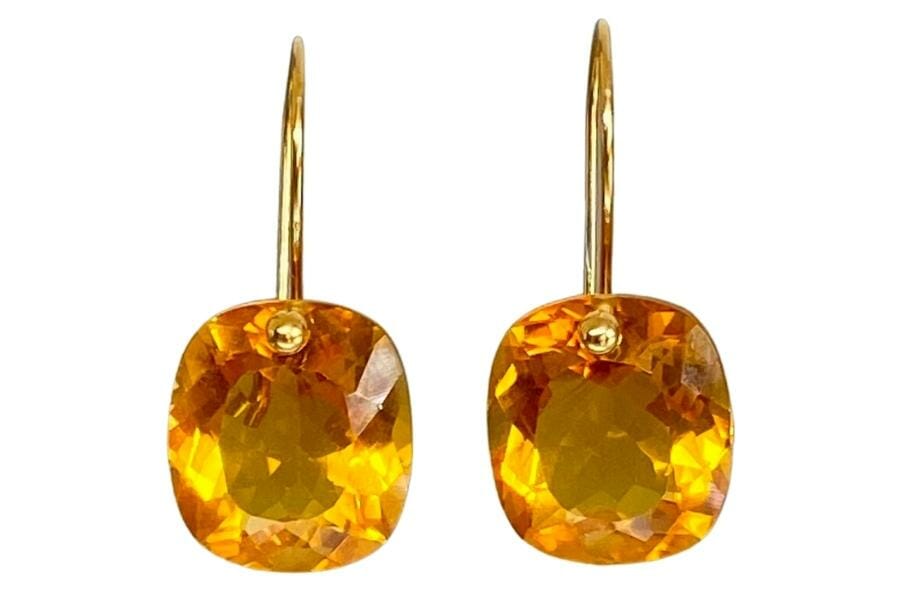
Among the topaz family, the bright and cheery yellow topaz stands out because it looks like a slice of summer. Imagine wearing a piece of the sun’s rays or having a little beam of happiness with you. That’s what yellow topaz feels like!
Yellow topaz can be found in many parts of the world. Brazil is a big player in the topaz game, offering some of the best and brightest!
But other countries, like Nigeria and even the United States, also have their share of this sunny stone.
Here’s a fun tidbit about this type: In ancient times, people believed that yellow topaz had the power to make its wearer invisible in times of emergency.
Sherry topaz
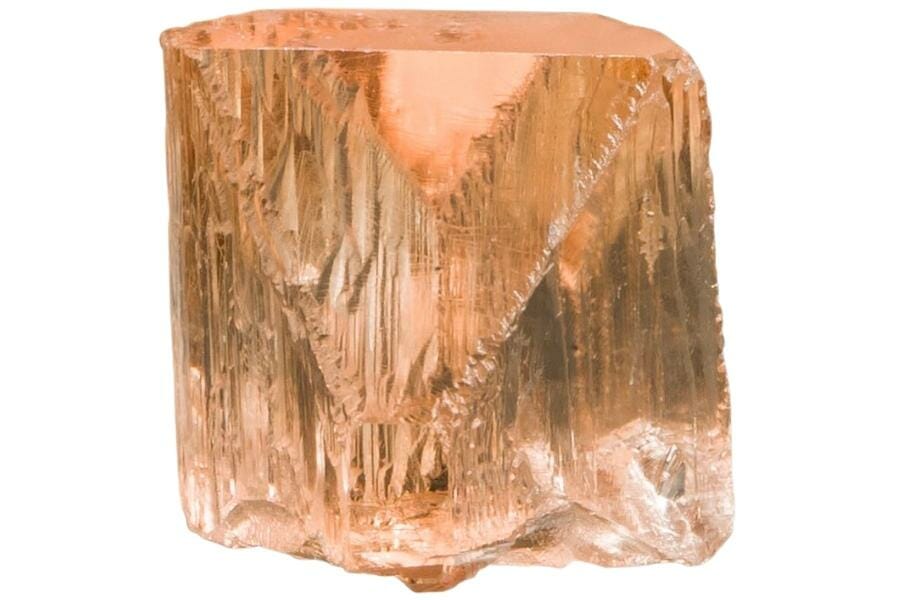
Sherry topaz’s name gives away its color— a rich blend of golden browns, oranges, and sometimes reddish tones.
What’s special about sherry topaz? Unlike the blues and yellows we often associate with topaz, sherry topaz has a warmth and depth that’s truly unique. Its colors can range from light golden browns to deep, rich oranges that shimmer in the light.
In the past, people believed topaz, including the sherry variety, could help break spells and calm anger. They even thought it could make you smarter and live longer!
Want to find some of this autumn-toned beauty? Brazil is a hotspot for topaz in general, and you can find lovely pieces of sherry topaz there.
But other countries, like Ukraine and Mexico, also offer some beautiful specimens.
White topaz
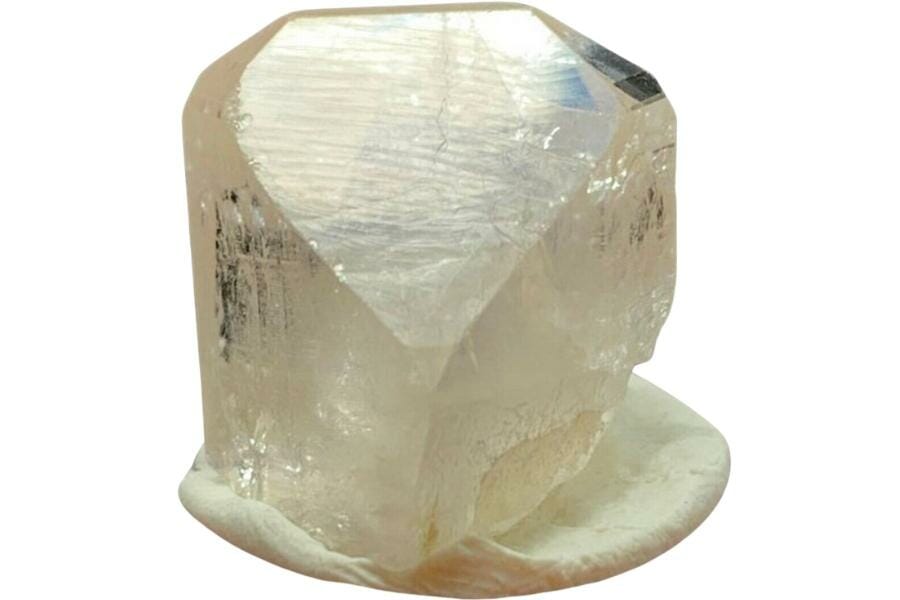
White topaz is often clear and sparkly, like a drop of pure, fresh water. Its transparency and clarity can make it look like a diamond, but don’t be fooled.
Just like its colorful siblings, white topaz is pretty tough, making it great for jewelry. Some jewelers even use white topaz as an alternative to diamonds because of its clear beauty and affordability.
If you’re wondering where to find white topaz, it’s found in Brazil, Nigeria, and in the U.S.
Sometimes, white topaz is heated or treated to give it vibrant colors, but naturally, it’s colorless and clear.
Blue topaz
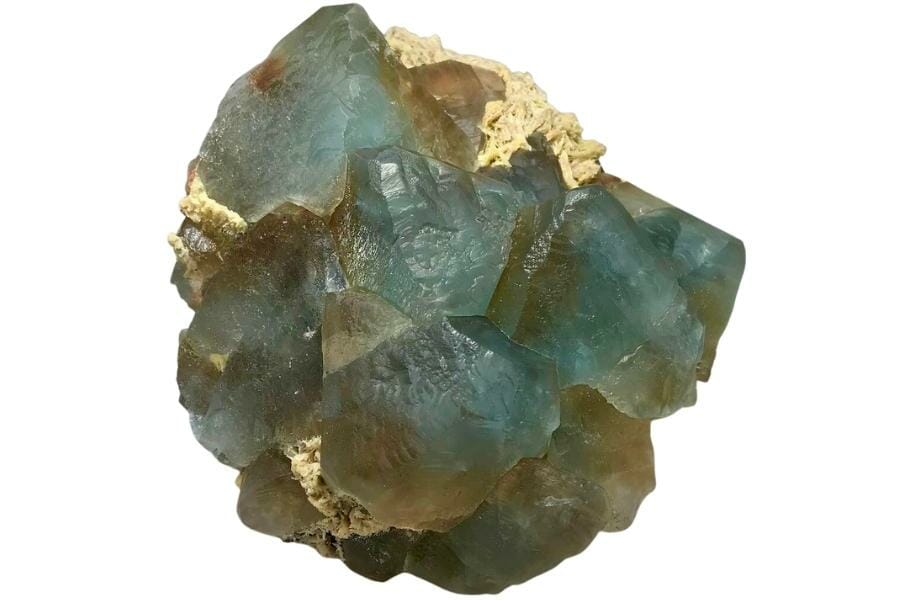
Of all the topaz colors, blue is one of the most popular and loved. Why? Because it reminds us of clear blue waters and peaceful skies. Whenever you look at a blue topaz, it’s as if you’re taking a mini-vacation to a tropical beach.
Naturally, topaz is often colorless or lightly tinted. But through a process called irradiation, where the gem is exposed to fast electrons, clear topaz can turn into the stunning shades of blue we know and love.
Ancient Egyptians believed blue topaz was a powerful protector. They thought it had the glow of the sun god, Ra, and could shield them from harm.
While topaz itself is found in places like Brazil, Nigeria, and in the United States, many of the blue topaz gems we see in jewelry have been treated to bring out their best blue colors.
Mystic topaz
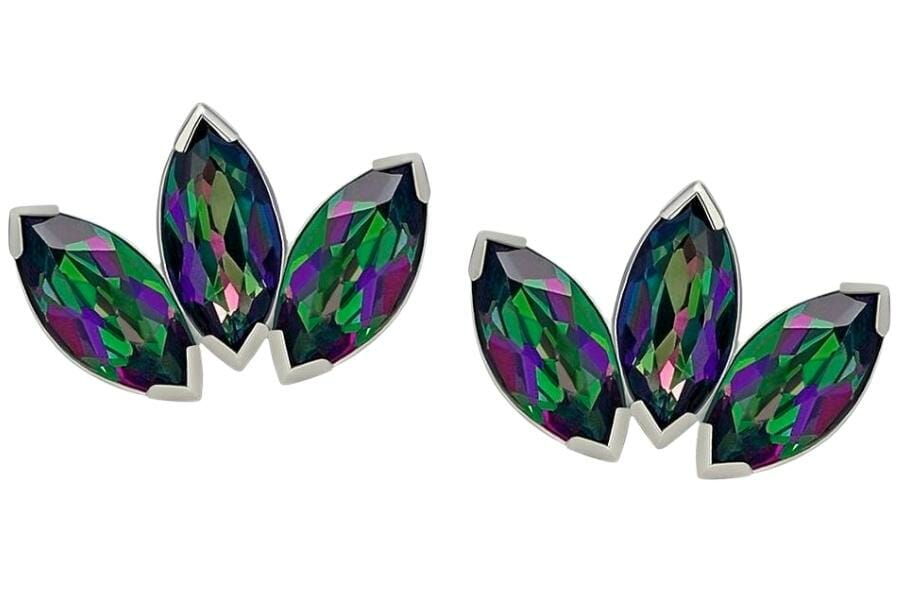
Unlike other topaz gems that are just one color, mystic topaz sparkles with a rainbow of colors.
How does this magic happen? Mystic topaz starts as a clear topaz. Then, with a special treatment, a super thin layer of titanium is applied to its surface.
This layer makes the topaz reflect light in a bunch of amazing colors. Every way you turn it, you see a different hue. It’s truly mesmerizing!
Because mystic topaz is treated, it’s not naturally found like that in the ground, so encountering them during your search in the wild is improbable. But it’s a good idea to be aware that such beauty exists.
Where To Find Topaz
With such captivating colors and crystal formation, it’s no wonder many people have been asking how to find tourmalines. Your best chance to uncover them is to visit the best places in the country where they have been found.
Below are the best areas to explore:
Topaz Mountain, Juab County, Utah
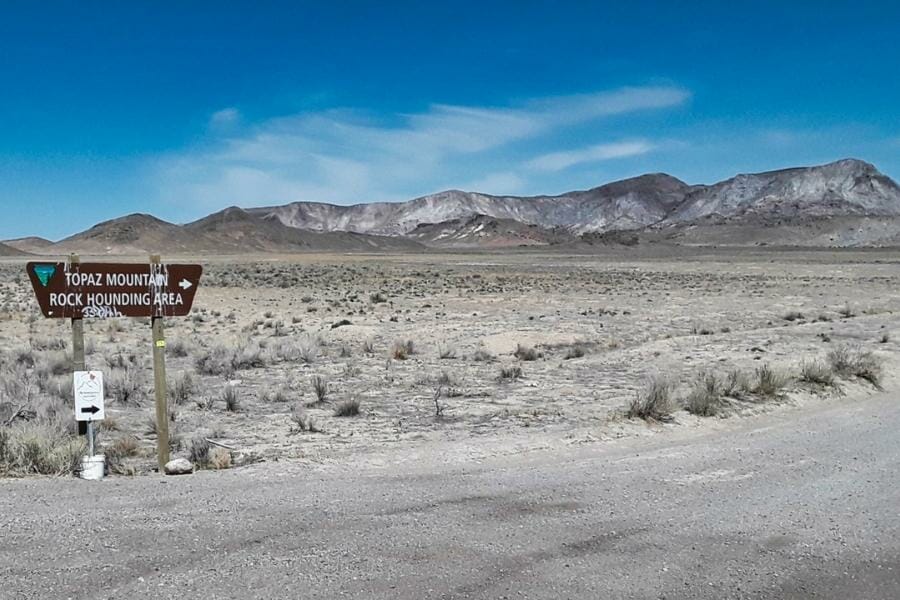
Nestled in the rugged desert of Utah’s west-central part, Topaz Mountain is named as such for a reason! It’s one of the best places in the U.S. to find top-quality topaz crystals.
The topaz from this area can become super clear— almost like a piece of glass.
But, if you leave it out in the sun, it can turn a lovely shade of amber because of the natural radiation it’s exposed to. How cool is that?
And while you’re looking for topaz, keep an eye out for other gems, too. Topaz Mountain is also home to red beryl, garnets, and amethyst.
Crystal Peak Topaz Prospect, Teller County, Colorado
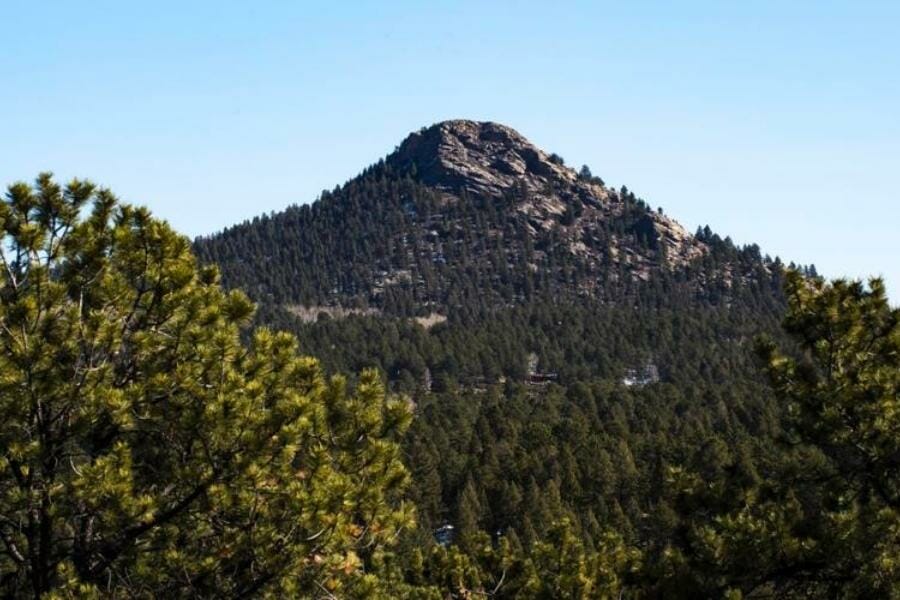
If you’re topaz hunting, Crystal Peak Topaz Prospect should be on your bucket list. It’s located in the beautiful Rocky Mountains of Colorado.
The topaz from this place isn’t your everyday find. In fact, they’re known for their superb clarity. Some of it can be so clear that they rival the quality of topaz from world-famous locations.
Sometimes, the topaz from Crystal Peak Topaz Prospect has a gorgeous blue or sherry tint, giving it an extra dash of mystery and allure.
Besides topaz, this area is also home to some other cool minerals like smoky quartz and amazonite.
Mason County, Texas
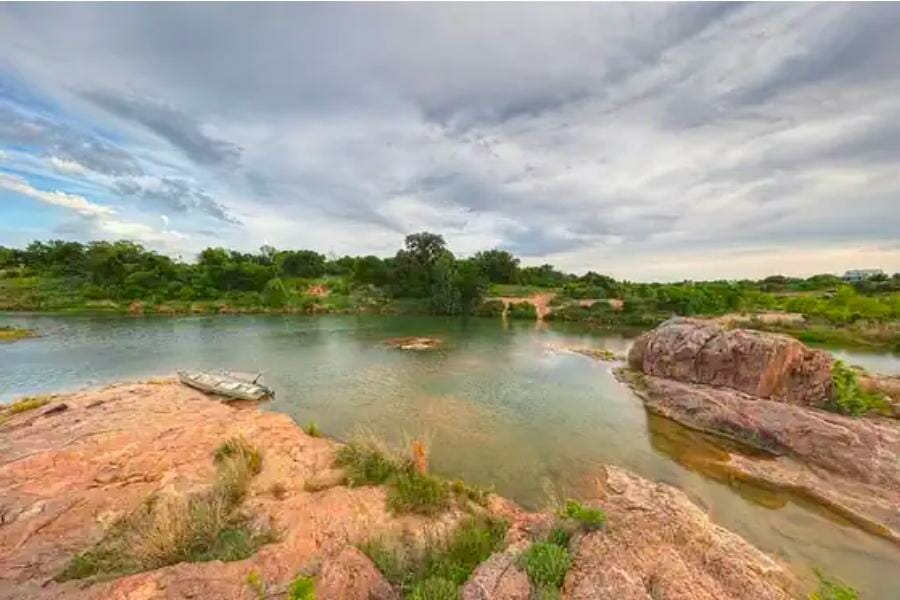
Mason County isn’t just any spot on the map. It’s like nature’s own treasure chest, especially if you’re into topaz.
This county is rich in ancient granite rock formations. These rocks create the perfect home for topaz to grow.
The terrain here, with its rolling hills and stream beds, has been shaped over time by water and wind, uncovering pockets where topaz and other gems are just waiting to be found.
Now, for the really exciting part: Mason County is THE spot to find blue topaz, which is Texas’ state gem! In fact, it’s the only county in this state where this beautiful blue gem can be discovered.
Lord Hill Mineral Collecting Area, Oxford County, Maine
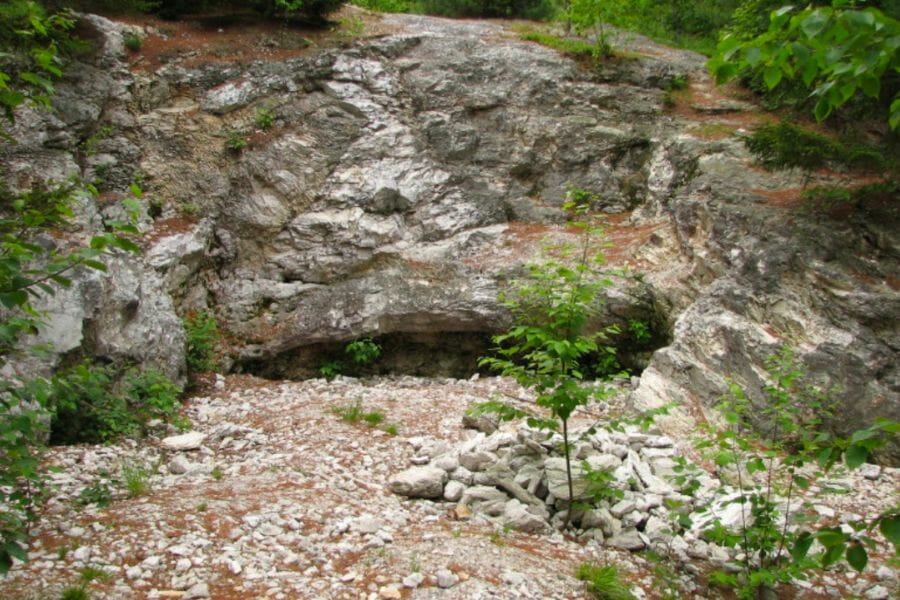
The Lord Hill Mineral Collecting Area is chock-full of pegmatite, a kind of rock that’s famous for holding a variety of minerals.
This unique rock forms from magma, and as it cools down, sparkling gems start to grow inside.
The topaz from Lord Hill Mineral Collecting Area has a cool characteristic: it often has a smokey or sherry hue, which makes it different from the topaz you might find in other parts of the world.
Lord Hill’s topaz crystals can also sometimes be found alongside other minerals like quartz and feldspar.
Moat Mountain Mineral Site, Carroll County, New Hampshire
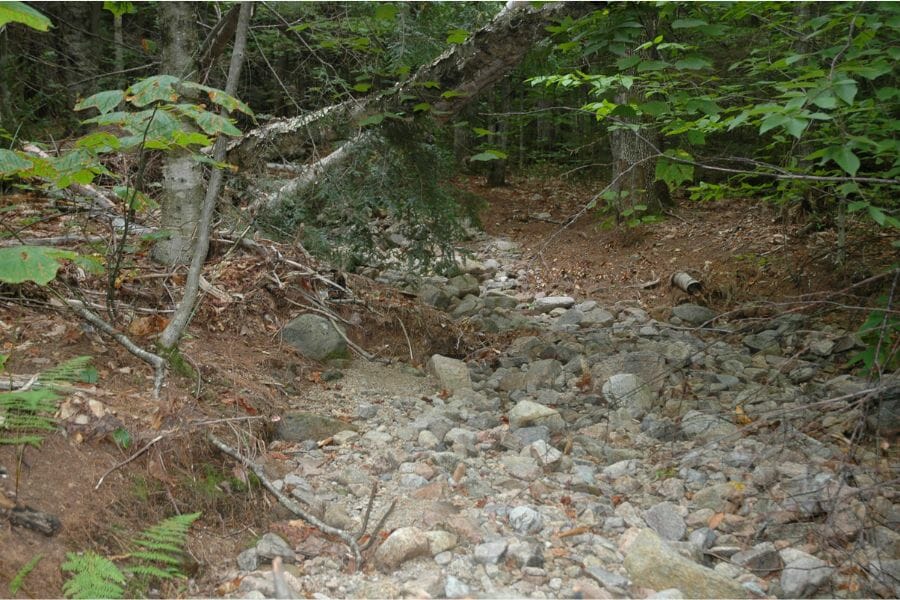
Nestled among scenic landscapes, Moat Mountain Mineral Site’s geology is fascinating. Rich in pegmatites, this site offers a haven for topaz, a true standout.
The terrain at Moat Mountain, characterized by outcrops and veins cutting through rocks, makes it an adventure-filled spot. As you hike and explore, you’ll find pockets where topaz and other minerals have grown over millions of years.
The topaz from this mountain often displays a gorgeous champagne hue. This makes the specimens from this site particularly sought after by collectors and enthusiasts.
A curious tidbit about the topaz from this area is its association with smoky quartz. It’s not uncommon to find these two minerals growing close together or even intertwined, presenting a delightful duo for you.
How To Identify Topaz Once You Find Them
Now that you know where you can find topaz, the next step for successful topaz hunting is to know how to identify this gem once you find it.
If you don’t know how it looks from the inside out, you are risking the chance of walking past one without knowing it. So, below are some of their most noticeable traits:
What topaz looks like on the outside
If you notice the following characteristics on the outside, there’s a fair chance you’re holding and observing a topaz:
Clear and transparent quality
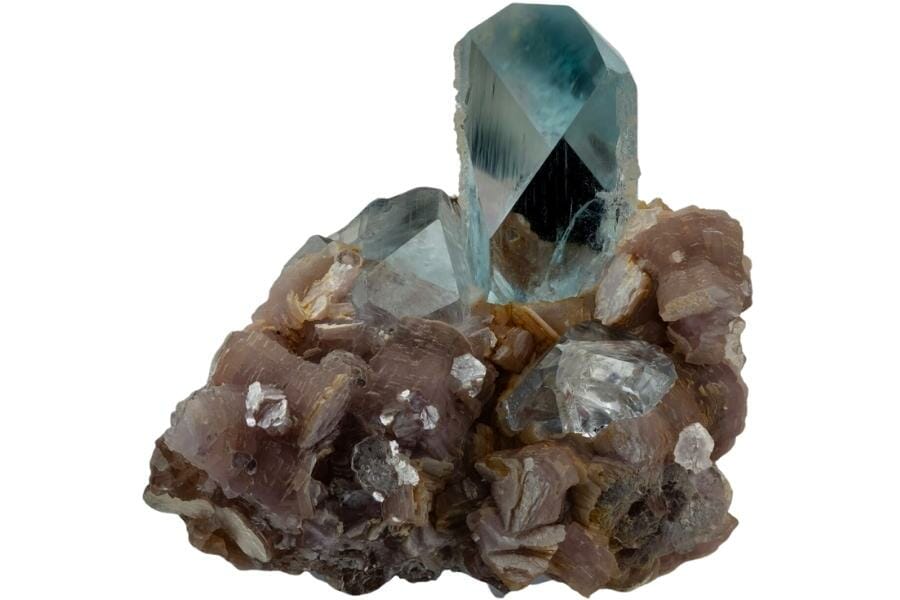
Imagine looking through a freshly cleaned window, and that’s what peeking through a piece of topaz can be like.
This clear quality is one of the gem’s standout traits. When you’re out in the field, it can be your trusty clue in identifying topaz among other stones.
Hold the stone up to the light. If it allows a lot of light to pass through and almost seems to glow, you might be holding topaz. Other gems can also be transparent, but topaz has a special kind of clarity.
Also, look for any inclusions or tiny specks inside. While topaz is usually clear, some pieces might have small imperfections.
Bright sparkle and glassy shine
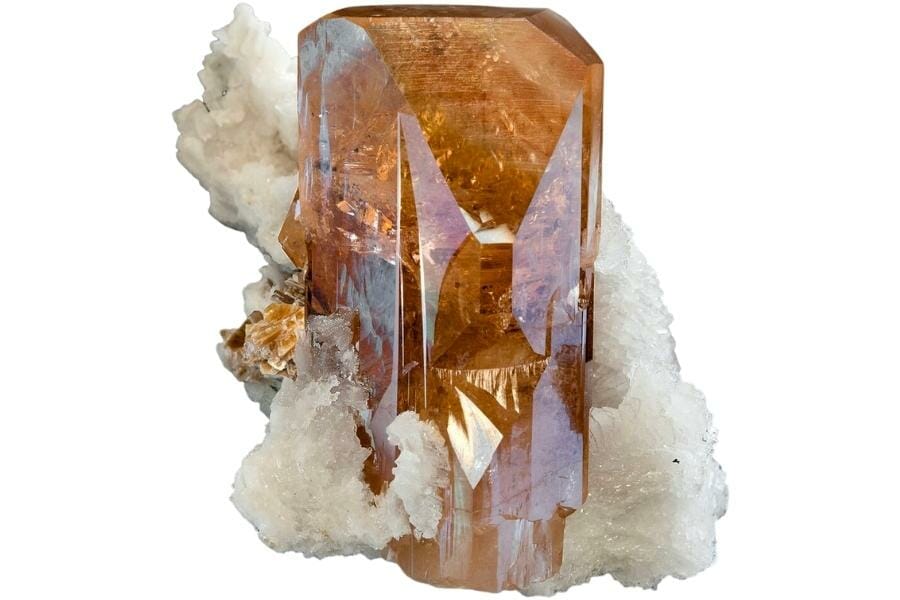
If you see a gem sparkle so brightly it catches your eye from a distance, it might be the brilliance of topaz at work.
Brilliance is all about how a gemstone plays with light. Topaz has this awesome ability to bend and reflect light, making it shine super brightly.
As for luster, or the way the surface of a gem shines in the light, topaz has a vitreous luster. This means it shines like glass.
When you’re out in the field, use these clues to spot topaz. If you find a stone that sparkles brilliantly and has that glassy shine, you might just have found a piece of topaz.
Long and prismatic crystals
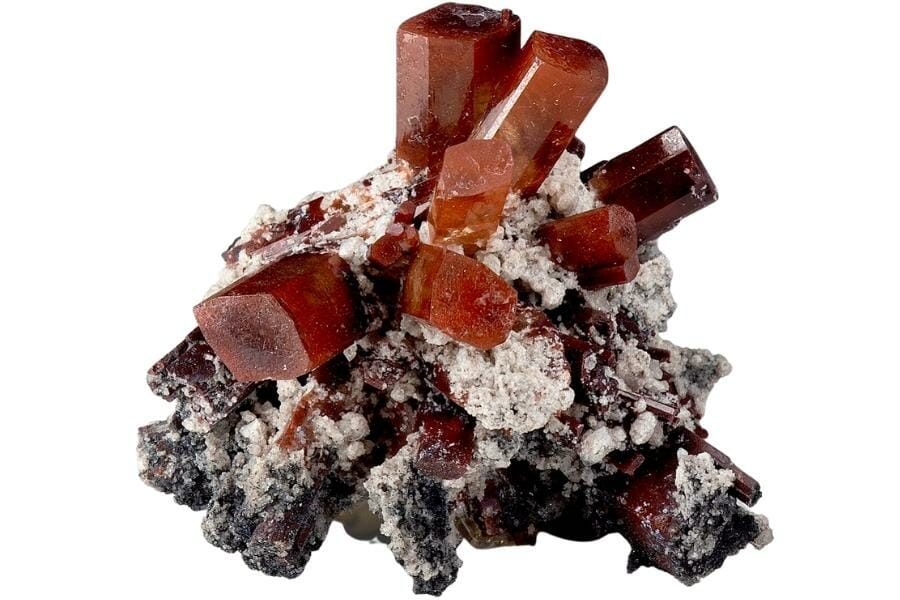
Topaz has a super neat shape when it forms naturally. It’s often long and prismatic. Picture a stretched-out, 3D rectangle, sometimes with pointy or pyramid-like ends. That’s how it’s shaped.
When you’re out hunting for gems, this shape can be a big hint you’ve found topaz. While many gems can form crystals, this gem’s long prismatic form is special.
If you stumble upon a transparent, elongated crystal that looks like a long tower or even a tiny skyscraper, you might be onto something.
Another cool thing is that the sides of these prismatic crystals often have ridges or stripes running vertically.
What topaz looks like on the inside
If you’re wondering about the observable traits of topaz from the inside, below are the following characteristics that will help you spot it in the wild:
Color zoning
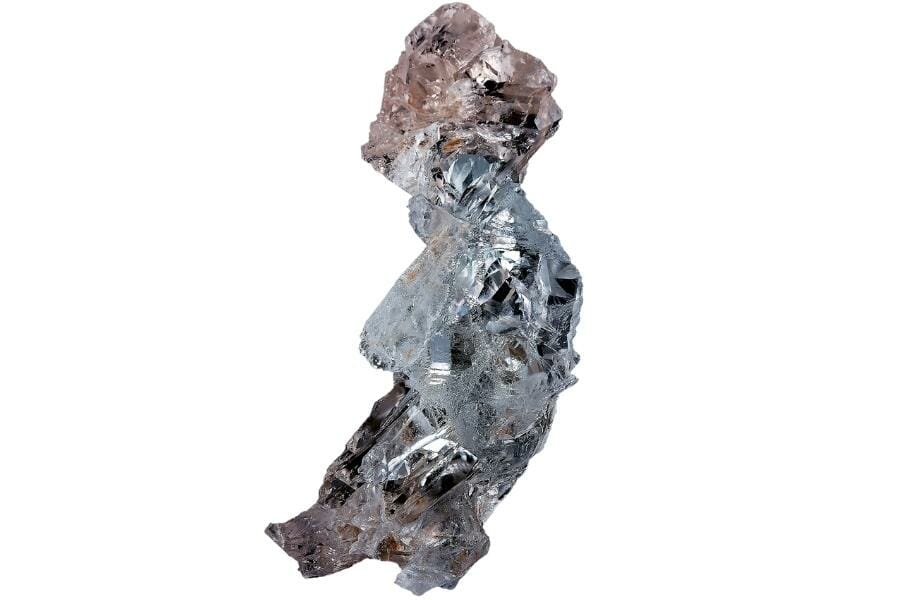
Color zoning is when different parts or “zones” of the gem have different colors.
Imagine a gem that’s mostly blue, but then has stripes or bands of clear or yellow. It’s like it has its own special design or pattern inside.
When you’re out searching for topaz in the field, this color zoning can be a big hint. Not many gems show this unique trait as this gem does.
If you find a stone that’s mostly transparent but has these unexpected color bands, you might be looking at a topaz.
Here’s a tip: hold the stone up to the sunlight. This lets you see the colors more clearly and spot those special zones.
Warm internal glow
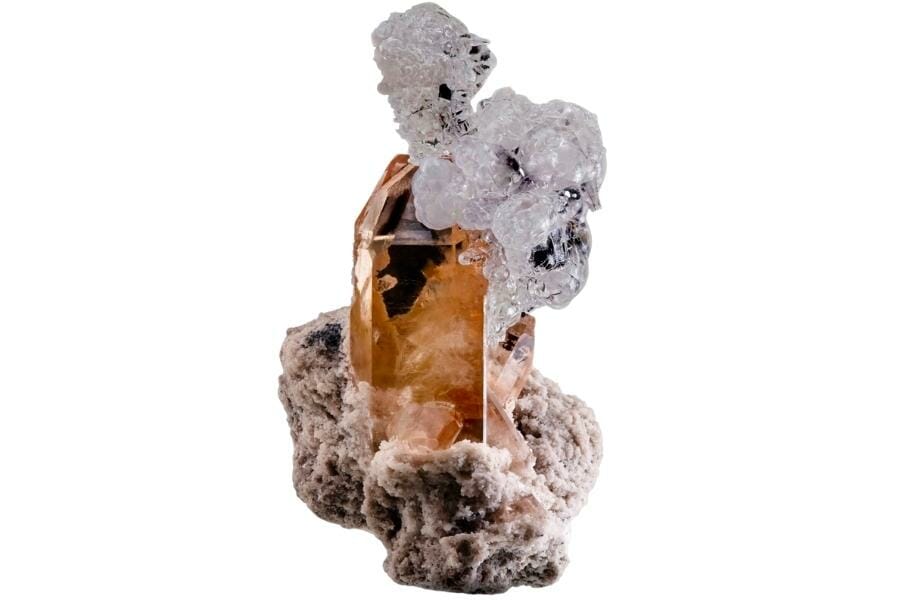
Topaz’s internal glow isn’t just about being clear or shiny. It’s about the unique way it captures and spreads light inside itself.
When sunlight or another light hits topaz, it dances around inside, giving it a warm, radiant appearance.
When you’re out in the field, this glow can be a bright clue that you’ve found a topaz. Imagine looking at a bunch of stones on the ground. One of them catches the sunlight and seems to light up from inside.
So, when searching for topaz, always pay attention to how stones play with light. A true topaz will have that special internal glow that makes it stand out.
Rainbow effect

Some topaz gems have this cool thing called the “rainbow effect.” This isn’t just one or two colors; it’s a whole burst of them, dancing inside the stone.
When light hits the gem just right, it splits into a spectrum of colors, just like a mini-rainbow.
When you’re out in the wild, hunting for gems, this rainbow effect can be a sparkling hint that you’ve stumbled upon a topaz.
If you pick up a stone and see a play of multiple colors inside, especially when you tilt it under the sunlight, you might be holding a topaz. Keep in mind, though, that not all topaz will show this.
How To Find Topaz
When you’re out in the field to look for topaz, what steps should you take to successfully find one. Below are three helpful tips you can do:
Look for the glow
One of the coolest clues you have to spot topaz is its unique “glow”. This isn’t a literal glow-in-the-dark kind of shine but a special internal radiance that the topaz has.
When sunlight or any light hits it, the stone captures that light and seems to light up from the inside out. It’s as if there’s a tiny lightbulb in the gem!
This brilliance sets topaz apart from many other rocks and minerals you might find. So, when you’re out in the field, and the sun is shining, keep your eyes peeled for that special shimmer.
Examine the shape
Another hint to spotting this gem out in nature is by checking out its shape. Topaz crystals often form in a cool prismatic shape.
That means they’re long, kind of like a pencil, but with flat sides or faces. These sides can be smooth and shiny.
If you’re hunting for topaz and you spot a crystal that looks like this, there’s a good chance you’re onto something.
Another thing to notice is the pointed ends that topaz crystals often have. Imagine a stretched-out pyramid; that’s how the ends might look. When you’re out and about, looking for gems, keep these shapes in mind.
Look for color zoning
A fun tip to help you spot topaz is to look for color zoning. Imagine a candy cane with its red and white stripes but in a crystal.
Color zoning means that the topaz might have different shades or colors in separate parts of the same crystal.
Sometimes, one end of a topaz might be a light blue while the other end is clear or a different shade. This happens because of the unique ways minerals grow and the conditions they face while forming.
If you’re out searching and you see a crystal that has these cool color patterns, there’s a good chance it might be topaz.

